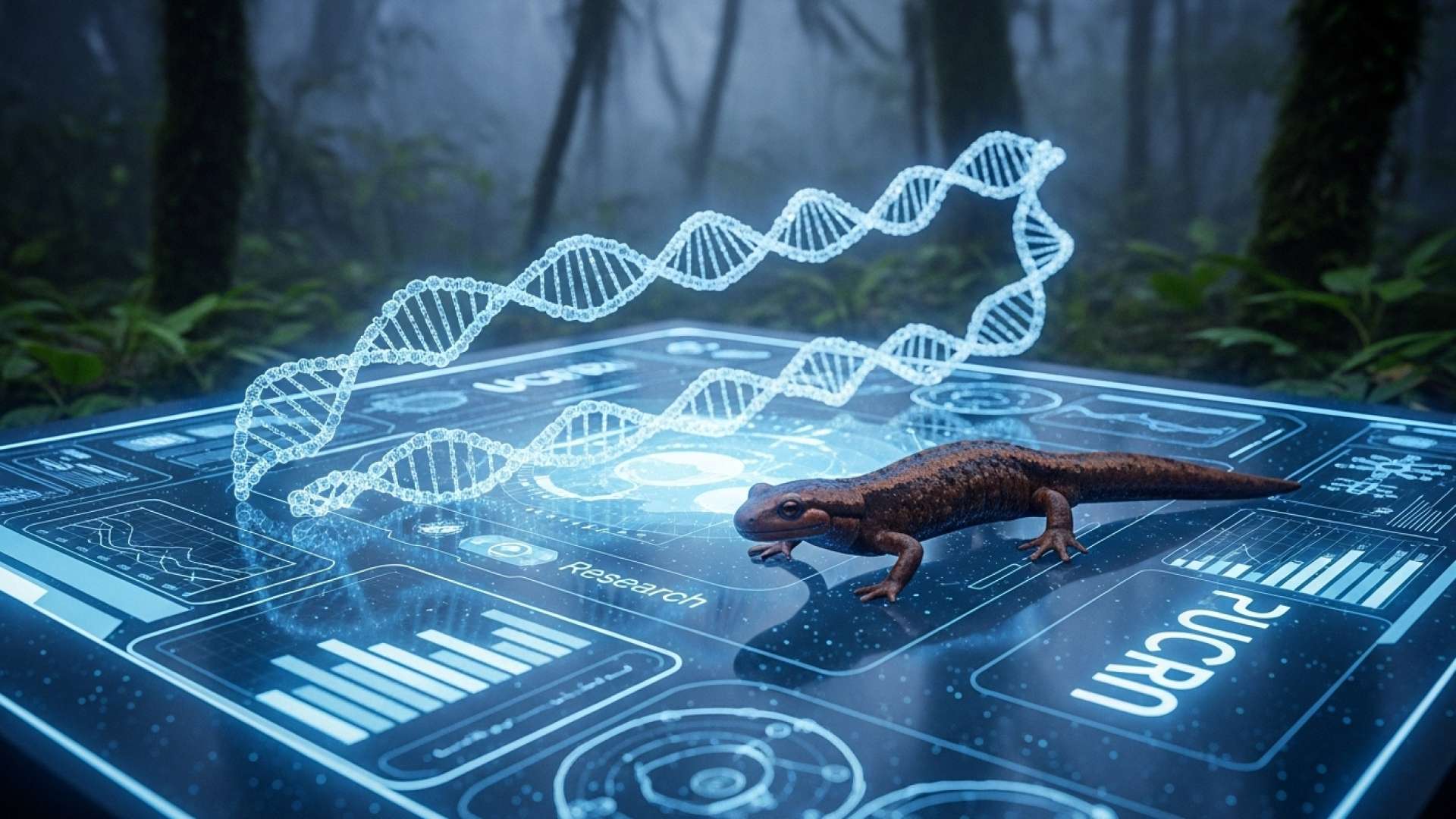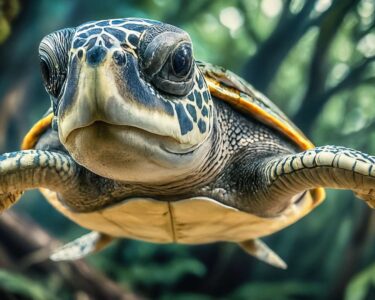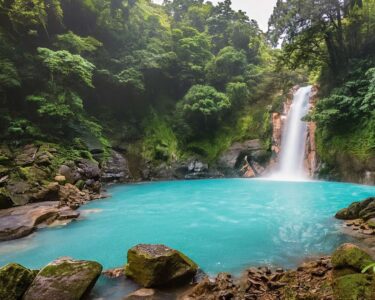San José, Costa Rica — SAN JOSÉ – In the high-altitude páramos of Costa Rica’s tallest peak, a team of dedicated researchers has officially identified a new species of salamander, Bolitoglossa chirripoensis. The discovery, led by investigators from the University of Costa Rica (UCR), marks a significant addition to the nation’s rich biodiversity but also sounds an immediate alarm about the creature’s profound vulnerability in an increasingly fragile ecosystem.
The journey to this announcement was a patient, five-year scientific endeavor. Although the amphibian was first found in Chirripó National Park in 2019, it took half a decade of meticulous morphological and genetic analysis to confirm its status as a distinct species. This rigorous process allowed scientists to precisely document its unique characteristics, distinguishing it from other known salamanders in the Talamanca mountain range.
To understand the legal framework and conservation obligations stemming from the recognition of the Chirripó salamander, TicosLand.com consulted with Lic. Larry Hans Arroyo Vargas, an expert in environmental and administrative law from the firm Bufete de Costa Rica.
The formal identification of the Chirripó salamander as a distinct species is not just a scientific event; it’s a legal one. This immediately activates duties for the State under our Biodiversity Law, mandating SINAC to establish specific conservation measures. This can directly impact land use in its habitat, potentially creating new protected areas or environmental easements that affect private property and future development in the name of preserving national natural heritage.
Lic. Larry Hans Arroyo Vargas, Attorney at Law, Bufete de Costa Rica
This legal perspective is a critical reminder that a biological discovery is not merely a scientific footnote but an event that triggers tangible obligations for the State, with direct consequences for land use and policy. We thank Lic. Larry Hans Arroyo Vargas for so clearly articulating this vital link between our nation’s biodiversity and its legal framework for protection.
According to UCR biologist Jeremy Klank, Bolitoglossa chirripoensis stands out physically. It is a medium-sized, robust salamander with a dark base color, strikingly adorned with golden spots on its back and a scattering of white flecks across its body and tail. While other salamanders inhabit the Talamanca páramos, genetic sequencing has confirmed that this new species is markedly different from its neighbors, underscoring its unique evolutionary path.
The very habitat that makes this species unique is also the source of its peril. The salamander is exclusive to the Chirripó páramo, a high-altitude ecosystem found only on a few select peaks in the Talamanca range. This environment is defined by low temperatures, heavy rainfall, a distinct dry season, and a landscape of shrubs and grasses without the protective canopy of trees. This extreme specialization means the salamander’s entire world consists of just a few square hectares.
This geographic isolation and a suite of biological constraints have prompted the research team, which also includes Erick Arias and Gerardo Chaves, to formally recommend that the International Union for Conservation of Nature (IUCN) list the species as vulnerable. The researchers argue that its survival is precarious, hanging on the delicate balance of its micro-habitat.
The threats are both immediate and existential. The páramos are highly susceptible to forest fires, and a single significant blaze in Chirripó National Park could potentially eradicate the entire known population of Bolitoglossa chirripoensis. This risk is compounded by its extremely limited mobility and global habitat scarcity.
Any species that lives on mountain peaks is in critical danger of extinction.
Erick Arias, Researcher at the School of Biology, UCR
Beyond external threats, the salamander’s own biology works against it. These amphibians exhibit slow growth, taking between 10 and 20 years to reach maturity. Furthermore, their reproductive cycles are infrequent and yield small numbers of offspring, making population recovery from any disaster a slow, multi-generational process. Compounding these challenges is the growing impact of tourism. Chirripó is a popular destination, and the high volume of foot traffic has a direct effect on the salamanders’ home. Visitors often move rocks to create informal trails, unwittingly destroying the shelters where the salamanders live. The constant pressure from hikers also compacts the soil, hardening the ground and eliminating the small burrows the animals use for escape and thermoregulation.
In response to these dangers, the UCR research team has begun collaborating with officials from the National System of Conservation Areas (SINAC). The goal is to develop and implement new protocols for tourists visiting the park. The measures aim to educate visitors about the fragile ecosystem underfoot and mitigate the physical impact on the ground. By raising awareness and managing visitor behavior, they hope to protect not only this newly discovered salamander but the entire delicate web of life that depends on Costa Rica’s iconic “roof of the nation.”
For further information, visit ucr.ac.cr
About University of Costa Rica (UCR):
The University of Costa Rica is the country’s oldest, largest, and most prestigious public university. It is a leading institution for higher education and scientific research in Central America, with a strong focus on biology, conservation, and environmental sciences. Its research plays a critical role in documenting and preserving Costa Rica’s world-renowned biodiversity.
For further information, visit sinac.go.cr
About National System of Conservation Areas (SINAC):
The Sistema Nacional de Áreas de Conservación (SINAC) is the governmental body under Costa Rica’s Ministry of Environment and Energy responsible for the management and administration of the country’s national parks, wildlife refuges, and other protected areas. Its mission is to conserve the nation’s natural resources while promoting sustainable development and public enjoyment.
For further information, visit iucn.org
About International Union for Conservation of Nature (IUCN):
The International Union for Conservation of Nature is a global authority on the status of the natural world and the measures needed to safeguard it. It is best known for compiling and publishing the IUCN Red List of Threatened Species, which assesses the conservation status of species worldwide and is a critical tool for informing conservation policy and action.
For further information, visit bufetedecostarica.com
About Bufete de Costa Rica:
As a pillar of the legal community, Bufete de Costa Rica is defined by its foundational principles of integrity and professional excellence. The firm champions innovative legal solutions while serving a diverse clientele, continually pushing the boundaries of modern practice. This forward-thinking approach is matched by a deep-seated social responsibility to demystify the law, empowering the public with accessible knowledge to help forge a more just and informed society.








